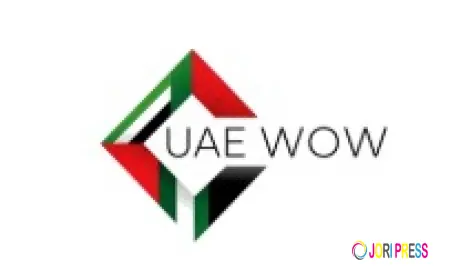Oil and Gas Mobility Market 2030 Report – Emerging Trends, Size, Share & Growth Drivers
Industry Key Highlights
According to TechSci Research report, “Oil and Gas Mobility Market - Global Industry Size, Share, Trends, Competition Forecast & Opportunities, 2030F, The Global Oil and Gas Mobility Market was valued at USD 23.12 Billion in 2024 and is expected to reach USD 65.61 Billion by 2030 with a CAGR of 18.99% through 2030. This dynamic growth is attributed to rapid digitalization, the emergence of smart operational practices, and the increasing need for real-time data management in hazardous environments.
Request For Sample Copy of Report For More Detailed Market insight: https://www.techsciresearch.com/sample-report.aspx?cid=30107#requestform
The oil and gas sector, historically slow to adopt technological change, is now embracing mobility at an unprecedented scale. From upstream exploration to downstream distribution, mobile-enabled solutions are revolutionizing how energy companies manage assets, monitor safety, automate workflows, and ensure compliance with stringent regulations.
Mobility has evolved into a critical enabler of operational resilience, particularly in remote and high-risk oilfields. The deployment of ruggedized mobile devices, real-time analytics apps, and cloud-based platforms has enabled workers and decision-makers to access vital data, communicate seamlessly, and mitigate risks instantly.
Browse over XX market data Figures spread through XX Pages and an in-depth TOC on the "Global Oil and Gas Mobility Market"@https://www.techsciresearch.com/report/oil-and-gas-mobility-market/30107.html
Emerging Trends in the Oil and Gas Mobility Market
1. Rise of Wearable Tech for Enhanced Worker Safety
In hazardous work environments such as offshore drilling platforms and remote desert rigs, ensuring employee safety has become paramount. The integration of wearable devices—from smart helmets and gas sensors to GPS-tracked badges—is rapidly transforming incident detection and emergency response.
Mobile safety applications equipped with digital checklists, real-time alerts, and automated reporting are significantly reducing risk exposure. In fact, the adoption of such tools has led to a 32% reduction in reportable safety incidents over a 12-month period in leading global companies. Workers now use smartphones to log potential hazards, trigger emergency alerts, and access up-to-date safety protocols.
2. Surge in Ruggedized Mobile Devices
Upstream and midstream operations often unfold under extreme weather, dust, vibration, and temperature. In such demanding environments, the need for rugged mobile hardware has become indispensable.
Modern ruggedized devices feature glove-compatible touchscreens, explosion-proof designs, high-brightness displays, and extended battery life—tailored to function efficiently in volatile zones. These devices are now being bundled with built-in capabilities like barcode scanning, thermal imaging, and digital signature capture, enhancing task efficiency in the field.
3. Smart Asset Management with Predictive Capabilities
As infrastructure ages and margins tighten, real-time asset monitoring is taking center stage. The emergence of mobile-first asset management platforms enables predictive maintenance, faster diagnostics, and minimal downtime. Integration with AI and IoT tools allows operators to make informed decisions based on sensor data, extending the life cycle of critical assets.
By 2024, the Asset Management segment became the fastest-growing application in the market, reflecting a strong push toward operational efficiency, especially in upstream and midstream sectors. These tools allow seamless scheduling, mobile diagnostics, and automation of compliance workflows.
Growth Drivers of the Oil and Gas Mobility Market
1. Digital Transformation and Industry 4.0 Adoption
With increasing focus on automation, cloud computing, and remote monitoring, oil and gas companies are rapidly transforming into smart enterprises. The transition toward mobile-first operations is part of a broader digital strategy to improve transparency, cut costs, and reduce human error.
This shift is further catalyzed by the growing importance of data analytics, real-time dashboards, and smart decision-making frameworks. The ability to access and act on information instantly—anywhere, anytime—is no longer a luxury but a business imperative.
2. Regulatory Compliance and Environmental Standards
As global scrutiny intensifies over carbon emissions, worker safety, and environmental risks, regulatory bodies are pushing for greater compliance and accountability. Mobility solutions play a key role by streamlining audit trails, automating safety logs, and enabling immediate incident reporting.
Geofencing, digital permits, and automated workflow management help companies stay within regulatory boundaries, preventing violations and enhancing public trust.
3. Expanding Remote Operations and Workforce Automation
Exploration and production increasingly occur in hard-to-reach, dangerous terrains—from deepwater rigs to Arctic facilities. Mobile technologies enable automation of these operations through remote surveillance drones, cloud dashboards, and AI-powered virtual assistants.
Additionally, mobile workforce management solutions help optimize shift scheduling, resource allocation, and compliance training—improving productivity while minimizing on-site personnel.
4. Demand for Cloud-Based Platforms and Mobile Analytics
Cloud infrastructure has revolutionized the way data is stored and processed. Companies can now deploy mobile solutions with cloud-backed analytics, enabling scalability, real-time collaboration, and integrated workflows. Applications supporting mobile analytics allow field managers to monitor KPIs, resource utilization, and performance indicators with precision.
Regional Insights
Asia Pacific: The Fastest Growing Market
The Asia Pacific region, led by energy-hungry nations like China, India, and Indonesia, has emerged as the fastest-growing geography in the oil and gas mobility space. Rapid industrialization, infrastructure upgrades, and investment in digital transformation have fueled demand for mobility across upstream, midstream, and downstream operations.
Government-led initiatives supporting digital oilfields, smart grids, and emissions control are further accelerating adoption. Cloud and mobile platforms have become essential tools for improving operational visibility, minimizing downtime, and reducing safety risks.
North America: The Technology Pioneer
North America continues to be a hub for innovation in oil and gas mobility. Major corporations are adopting AI-driven mobile apps, smart safety gear, and machine learning-based asset optimization solutions. The region is also witnessing strong collaboration between tech firms and energy players, resulting in faster deployment of next-gen mobility solutions.
Middle East & Africa: Mobilizing Oil-Rich Economies
With some of the world's richest oil reserves, the Middle East is aggressively digitizing its energy sector. Saudi Arabia, UAE, and Qatar are investing in cloud-native mobility solutions to optimize extraction, reduce emissions, and ensure transparency in operations. Likewise, Africa’s emerging economies are leveraging mobile platforms for resource mapping, production analytics, and remote asset monitoring.
Key market players in the Oil and Gas Mobility Market are: -
- ABB Ltd.
- Honeywell International Inc.
- Siemens AG
- Schneider Electric SE
- Emerson Electric Co.
- IBM Corporation
- SAP SE
- AVEVA Group plc
Customers can also request for 10% free customization on this report.
Contact US:
Techsci Research LLC
420 Lexington Avenue, Suite 300,
New York, United States- 10170
Tel: +13322586602
What's Your Reaction?
 Like
0
Like
0
 Dislike
0
Dislike
0
 Love
0
Love
0
 Funny
0
Funny
0
 Angry
0
Angry
0
 Sad
0
Sad
0
 Wow
0
Wow
0


















































